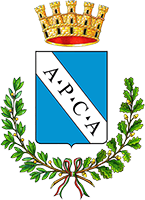
During the riots of 1848-49, Amerini volunteers participated in the defense of Vicenza, in the Roman Republic, and in the 1859 riots, until September 21st 1860, when the Piedmontese troops of General Brignone entered the city. The new royal government expropriated many goods of the Church. At the beginning of the century, the rise of agriculture and the birth of the first local industry did not prevent emigration, especially to the United States and Argentina. Electric light came to Amelia in 1911 replacing the public lighting oil.
During the First World War, Amelia’s inhabitants contributed 188 dead soldiers on the battlefield. During Fascism, as in every part of Italy, rallies followed, speeches, marches and exercising exhibitions were held between City Hall Square (today Piazza Matteotti), Piazza Vittorio Emanuele (today Piazza G. Marconi), Via Garibaldi, Corso Vittorio Emanuele (now Via Repubblica) and at the monument of the fallen (Piazza A. Vera). During the Second World War the only act of war that involves Amelia was the tragic Allied bombing of January 25, 1944, during which, by mistake, instead of the bridge, the Great Church of St. Elizabeth (now Saint Lucia) and the adjoining female elementary school was hit.
The new atmosphere of the post-war period was marked by the setting of the film Il Passatore, which was entirely shot in Amelia and directed by Coleman (1947). A group of drivers, technicians and new myths of the cinema, including actors such as Rossano Brazzi, Valentina Cortese, Gino Cervi and the rising star Alberto Sordi, poured into the city. After the Fascist period, in 1946 the Socialist blacksmith Cafiero Liberati was elected mayor, and he would stay in office until 1964.


